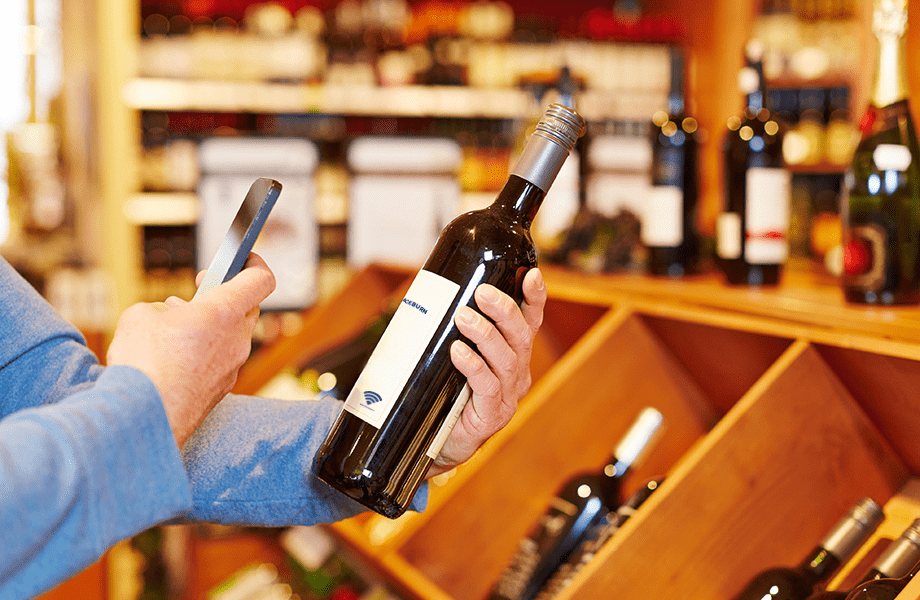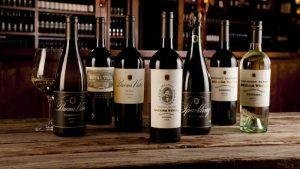
На сайте используются cookie файлы
The site uses cookie files
Данный сайт имеет возрастное ограничение!
This site has age restrictions!
Я подтверждаю, что мне, увы, уже давно исполнилось 18 лет
The dressing of wine gets inspiration from the “contactless” technology of our bank cards. NFC (Near Field Communication) technology opens up new possibilities for the wine trade within smartphone reach. A guarantee of authenticity and a logistical tool, radio frequency identification (RFID) is becoming an asset in digital marketing.
What is NFC technology?
The NFC tag, also called an inlay, is a passive transmitter that uses radio waves. The electronic chip transmits information through its antenna which captures the energy supplied by any smartphone, Android, or iPhone, placed near the tag. A thin and small support, it slips invisibly under the freshly printed adhesive label or is added as a chip on your already labeled wines.
Avery Dennison is the world’s largest technology partner with multiple R&D centers and production sites in every region of the world. Initially a traceability tool, like its use in the pharmaceutical and food sectors, the NFC tag has become an asset in customer relations. “Big houses use it to guarantee the authenticity of their products around the world,” explains Benoit Jourde, Business Development Manager at Avery Dennison. “It is more reliable than a QR code and can even become a pledge of inviolability, a definite asset in limiting counterfeiting.”
What is a connected label for?
NFC technology allows the traceability of each bottle to better understand its distribution channel.
The bottle is localized each time it passes a dedicated reading gantry. If your bottle is destined for the US market and it is scanned in China, you immediately identify which link in the distribution chain has caused a problem. The consumer who connects to the bottle also becomes an ally in targeted market knowledge. Thanks to geolocation, you can know in real time where the bottle is located and whether the consumer is scanning it in a store, restaurant or at home.
David Lamballais, Development and Innovation Director for the Tag & Play solution explains how technology has naturally found its place in wine packaging: “Historically, we are a family printing company created more than 50 years ago. In 2010, we incorporated NFC technology as a simple addition to the label design. The use of logistics appeals to customers, but marketing applications open the door to a multitude of possibilities.”
The widespread use of smartphones, purchases influenced by online research and the desire for a direct connection with the brand are all favorable criteria for using the NFC tag for commercial purposes.

Communication without limit with the consumer
For the winegrower or the merchant, introducing NFC technology means the possibility of communicating and creating a link directly with his customer. Solutions such as the Tag & Play marketing and communication platform put technology within reach of winegrowers and offer an adapted digital offer. “The NFC tag allows secure redirection to the winery’s website or to any web content chosen by the winemaker.”
NFC technology can thus provide access to information as precise as the parcel where the grape was harvested, the date of harvest or bottling. The information can be updated, such as indicating the ideal tasting time for example. The NFC tag provides an original interactive user experience that tends to become more and more customizable.
Boisset wines have implemented NFC technology first for the sake of authentication on their JCB range in order to offer a tasting experience to their VIP customers from their salon in Yountvil (California, USA). Collectors and members of wine clubs quickly appreciated being able to have information available to them, even in a more prioritized way of giving exceptional wines. Extended to other ranges this year, the connected label provides access to the founder’s personal stories or videos on the origins of the wines.
NFC technology heralds the future of the label. The dressing of your wine is thus designed in your image and goes beyond the paper medium to appeal to the consumer.
Photo: Boisset Collection, Resource Label Group
02.04.2024